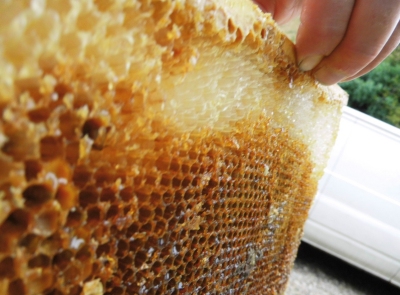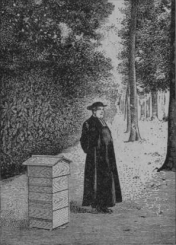
Warré plans
Warré methods
Warré modifications
Warré precursors
Groups / Fora
Google
e-group
Biobees.com
forum
Abbé Warré's book
Beekeeping for All:
Warré combs will usually be all or partly used for brood. The boundary between the honey only area at the top and the brood area below is usually sufficiently clear to enable the top part to be cut out and used as cut comb honey. Cut comb honey can be consumed directly without having to cope with a mouthful of cocoons. If consumed directly, any wax can be spat out or swallowed.
The photo below shows a comb partly filled with honey. The red arrow points to a small area suitable for cut comb.
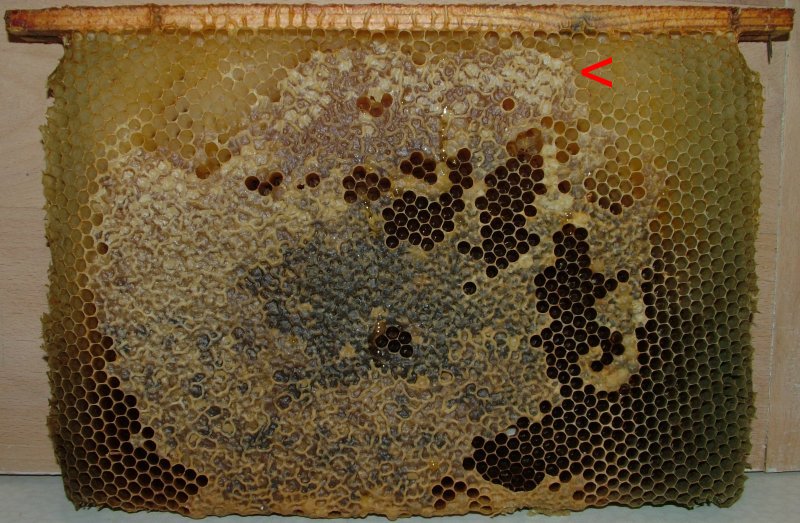
Below: example of a Warré comb supported by Langstroth frame parts cut down to fit a Warré and with the bottom rails omitted. It shows comb containing entirely honey and suitable for cut comb (Photo: Margie Schwartz).
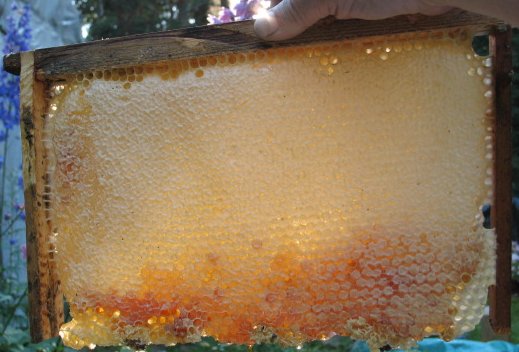
For the rest of the comb that is unusable as cut comb, the honey usually has to be extracted somehow. It is sometimes stated that the less processing it undergoes during extraction the better is the retention of the bouquet of flavours of the original honey. Accordingly, simply squeezing the honey slowly out the comb, usually with a press, or letting the honey drain through a sieve after cutting open the cells are the next best options short of having cut comb on your plate.
There are various methods for getting the comb out of the box. One is to invert the box, cut through the connections to the walls with a serrated knife such as a bread knife, return the box to upright over a food grade plastic container and remove the top-bars, letting the combs drop into the container. Here is a video in French of Olivier Duprez demonstrating that method as he extracts honey from a Warré box: http://youtu.be/KeLSfDzuaL8 . Another method, with the box upright, is to use a comb knife to free the combs from the box walls, remove them one at a time and cut off the top-bars, leaving 5 mm of comb on the bar as a starter for when it is put back into use. A third method, probably better suited to those with a lot of boxes to harvest, is to use a comb spade.
The following photos and description of the comb spade are from
Bill Wood (Oregon). "The photo below left shows the tool itself. It was called a
scraper or floor scraper and had a six foot long handle made of Ash. I removed the long
handle from the scraper head and mounted a child’s shovel handle to create a
short-handled flat spade.
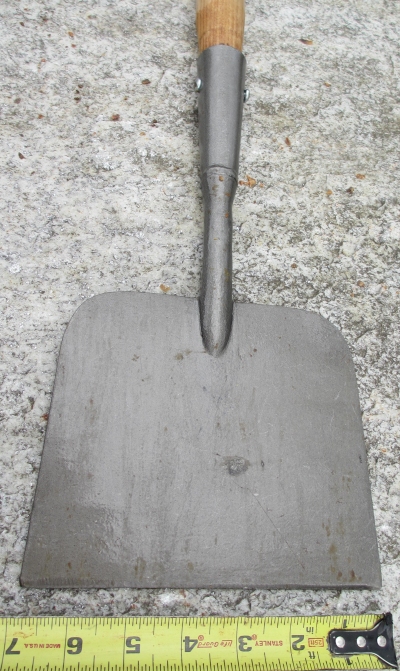
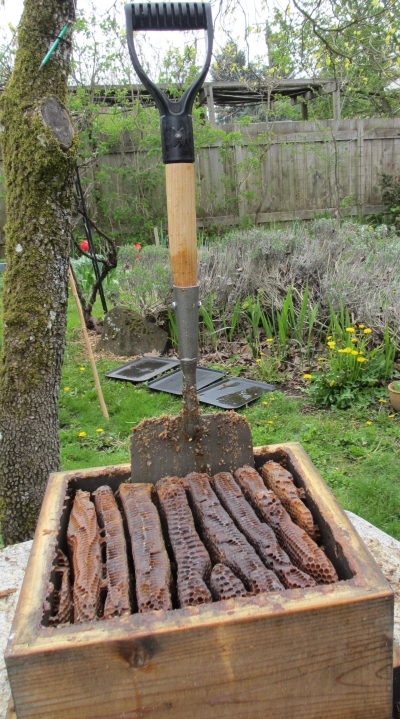
The photos immediately below show the freed combs, ready for
grading.
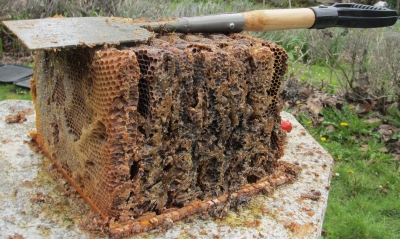
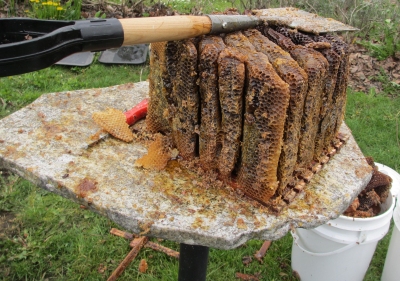
Extraction methods
Pressing is described on a separate page. Here we give some suggestions for extraction by cutting (or crushing) and draining as well as centrifuging combs in cages as Warré described in Beekeeping for All. For some, the challenge will be scaling-up the draining method to take at least all the comb from a full box of honey, which could weigh over 15 kg. For others, the ordinary utensils available in the kitchen will suffice.
1. Dav Croteau's crush and drain method
(See also Larry Garrett's crush and strain method using all food grade utensils.)
Take 2-five gallon buckets with 2-covers. In one cover cut out a center hole leaving an inch or so lip on which to to set the top bucket (red). The top bucket gets 1/4" (6 mm) holes drilled in the bottom about an inch (25 mm) apart.
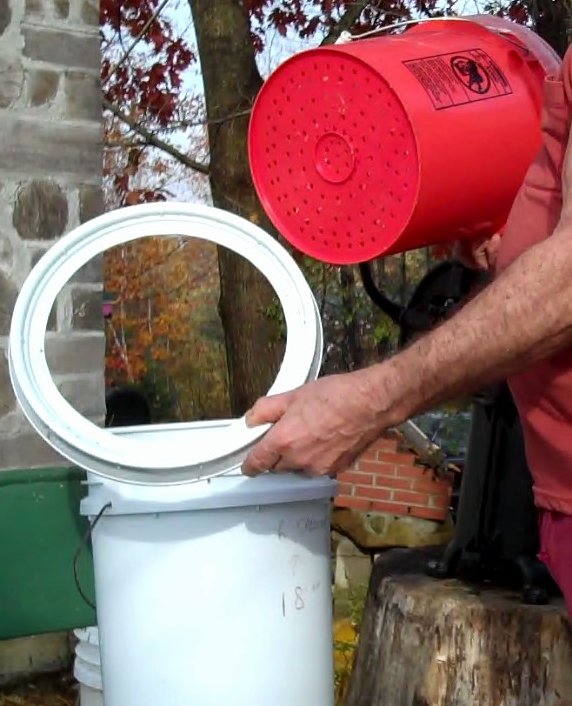
The bottom bucket (white) has a honey valve in the bottom. (In this photo the bucket still has a bit of granulated honey at the bottom.)
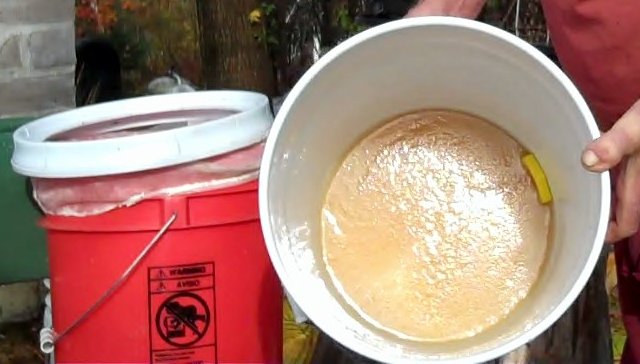
Put a five gallon mesh bag in the top bucket and add the crushed comb.
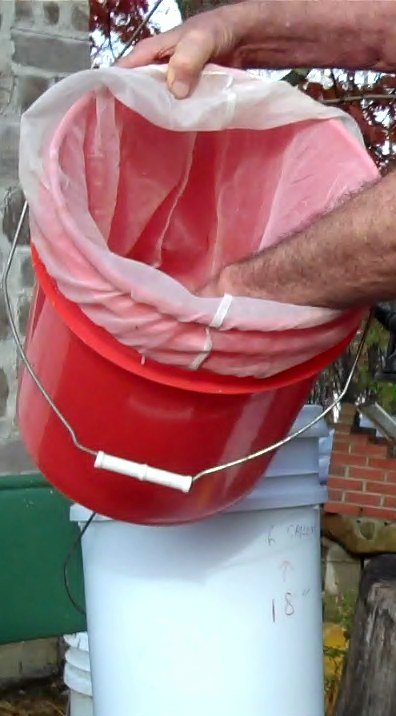
Cover and let drain for a few days.
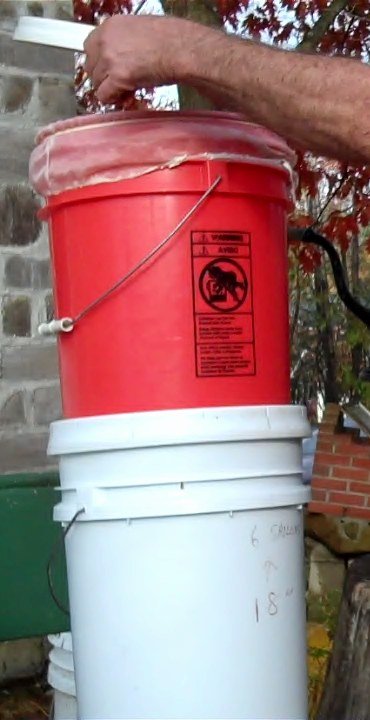
Putting the buckets in the greenhouse to drain where it is warm/hot speeds the flow. Setting them in the sun during the day would speed things up.
The drained comb is pressed free of any trapped honey using an Enterprise sausage stuffer as illustrated on the presses page.
2. David Heaf's cut and drain method
As there is sometimes pollen present under capped honey in the comb and too much maceration of the comb could release the pollen, causing a turbid product, one option is to cut the comb with a sharp knife. This releases very little pollen into the honey.
Full details of this method are given on David Heaf's website. As with Dav Croteau's method, the comb fragments are squeezed free of residual honey in a press.
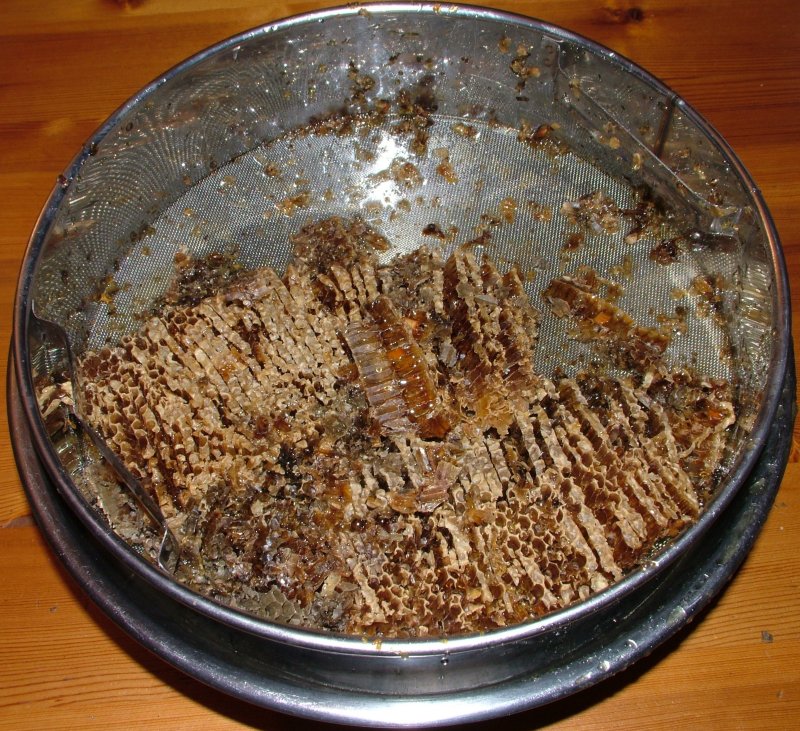
2. Warré's centrifugation method as
implemented by Tobi Schwenn ( http://sustainbees.com/Honey.php )
Warré's method is shown on pages 61-64 of Beekeeping for All.
After removing the combs from the hive box, they are uncapped, placed in cages made of perforated food grade stainless steel and centrifuged four at a time in a manual tangential extractor whose drum and basket are made of food grade stainless steel. After spinning the honey out of one side of each comb, the cages are rotated to extract from the other sides.
Left: Warré combs ready for uncapping. Right: The tangential extractor with four comb cages.
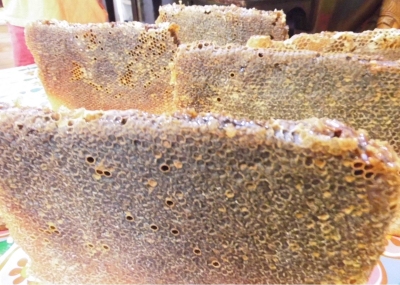
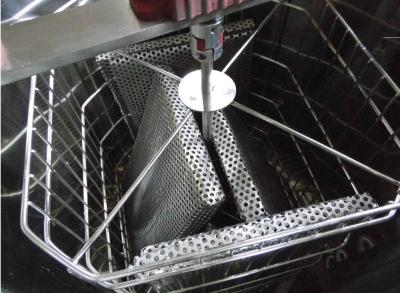
Left: Using an uncapping fork. Right: The extractor spinning.
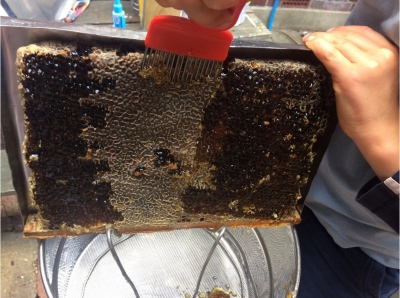
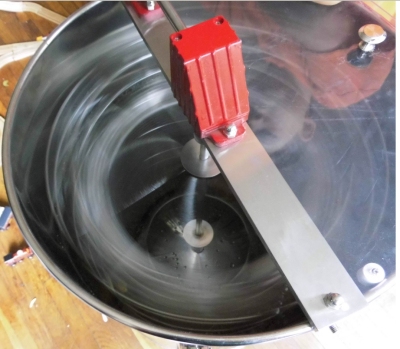
A Warré comb emptied of honey by spinning.
